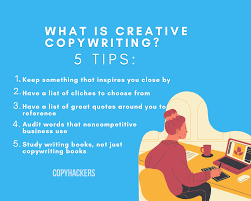Copywriting is a powerful tool in marketing, but not all copy is created equal. Two primary types of copywriting—Direct Response and Brand Copywriting—serve different purposes and require different strategies. If you’re looking to elevate your business with compelling content, understanding these distinctions can help you craft messages that drive action and build long-term customer relationships.
What is Direct Response Copywriting?
Direct response copywriting is designed to trigger an immediate action from the reader. Whether it’s clicking a link, signing up for a newsletter, or making a purchase, the goal is to prompt instant engagement. This form of copy is often used in email marketing, pay-per-click ads, and landing pages.
- Action-Oriented Language: Direct response copy relies on strong calls to action (CTAs), such as “Buy Now,” “Sign Up Today,” or “Get a Free Quote.”
- Measurable Results: Since it’s designed for immediate engagement, its success can be tracked using conversion rates and analytics.
- Highly Targeted: It speaks directly to a specific audience, addressing pain points and offering solutions.
If you’re running Google Ads or launching a pay-per-click campaign, mastering direct response copywriting can significantly improve conversions.

What is Brand Copywriting?
Brand copywriting, on the other hand, is focused on long-term relationship building. Rather than pushing for immediate action, it aims to shape brand perception, increase awareness, and build trust over time.
- Emotional Connection: It tells stories and creates narratives that resonate with the audience.
- Consistent Messaging: Aims to maintain a brand’s tone and personality across all platforms.
- Long-Term Strategy: While direct response copy is about quick wins, brand copywriting is about lasting impressions.
For businesses investing in content marketing and SEO strategies, brand copywriting plays a crucial role in engaging audiences and enhancing online visibility.
Which One Should You Use?
The best marketing strategies often use both direct response and brand copywriting. While direct response can drive immediate sales, brand copywriting builds credibility and fosters customer loyalty.
For example:
- A social media campaign may use brand copy to establish authority, while sponsored posts may feature direct response copy to drive engagement.
- A well-optimized SEO strategy may use informative blogs to enhance brand credibility, while landing pages use persuasive direct response techniques to capture leads.
Final Thoughts
Both types of copywriting serve essential roles in marketing. If you want to see instant results, direct response is the way to go. But if you aim for long-term brand growth, brand copywriting will establish your business as an authority in your niche.
Need expert copywriting for your business? Our team at Social Media Max specializes in creating compelling content tailored for both direct response and brand marketing. Contact us today to boost your marketing efforts!
